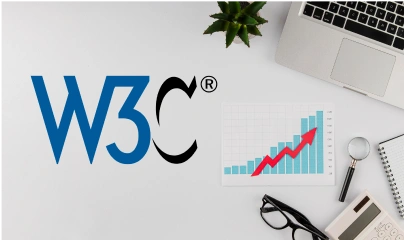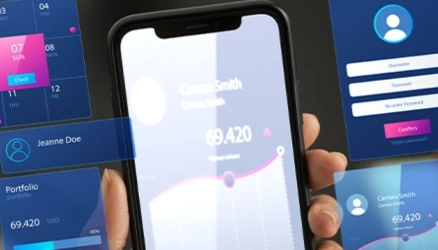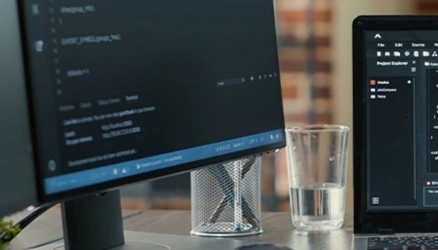To make sure your microservices-based system is reliable and secure, you need to cover different testing layers. This checklist breaks down the key testing areas you need to cover:
1. Unit Testing
Unit testing focuses on testing individual microservices in isolation. It verifies that each service functions correctly on its own without relying on other components.
What to Check:
✔️ Test the logic of each microservice independently.
✔️ Validate input and output for each service.
✔️ Test edge cases and boundary conditions.
✔️ Ensure error handling works correctly.
Example:
Test a user authentication service to verify that it accepts valid credentials and rejects invalid ones.
2. Integration Testing
Integration testing verifies that microservices communicate with each other correctly. Even if individual services work independently, they must exchange data accurately.
What to Check:
✔️ Test how microservices handle data from other services.
✔️ Validate data transformation during API calls.
✔️ Ensure that timeouts and failures are handled gracefully.
✔️ Test how services respond to unexpected inputs from other services.
Example: Test an order processing service to ensure it receives data from the product catalog and sends it to the payment gateway without issues.
3. API Testing
APIs are the backbone of microservices communication. If an API call fails or produces incorrect data, it can create system-wide issues.
What to Check:
✔️ Test API request and response accuracy.
✔️ Validate HTTP status codes and error messages.
✔️ Test for rate-limiting and throttling behavior.
✔️ Ensure APIs handle different data formats consistently.
Example: Test a product catalog API to confirm it returns the correct product details based on the user’s request.
👉 Vervali’s API testing services cover all major protocols and data formats to improve communication accuracy.
4. Contract Testing
Contract testing verifies that the API agreements between services are maintained. If one service changes the data structure or format, it can break the contract and cause failures.
What to Check:
✔️ Ensure data structures are consistent across services.
✔️ Validate request and response formats.
✔️ Test compatibility between different API versions.
Example: Test an order processing service to ensure it receives data in the correct format from the product catalog service.
5. Performance Testing
Microservices should handle varying levels of traffic without slowing down or failing. Performance testing checks how the system handles stress and high user loads.
What to Check:
✔️ Test system response times under peak load.
✔️ Identify bottlenecks in data processing.
✔️ Test how microservices scale under increased demand.
✔️ Monitor memory and CPU usage.
Example: Test an e-commerce platform during a flash sale to verify that the system handles thousands of concurrent orders without crashing.
👉 Vervali’s performance testing services ensure your microservices-based system scales without slowing down.
6. Fault Tolerance and Resilience Testing
Microservices should be able to recover from failures without compromising the overall system.
What to Check:
✔️ Test how the system behaves when one or more microservices fail.
✔️ Introduce service timeouts and test recovery mechanisms.
✔️ Monitor fallback strategies during service failures.
Example: Test a payment processing service to confirm that the order is still logged even if the payment service fails.
7. Data Integrity Testing
Microservices often share data through APIs and databases. Data integrity testing ensures that data is accurate and consistent across all services.
What to Check:
✔️ Test data accuracy across microservices.
✔️ Monitor data consistency during high traffic.
✔️ Test how data updates propagate across services.
Example: Test a user profile update to confirm that the changes reflect across all linked services.
8. Security Testing
Microservices-based systems face security risks due to increased communication points and data exchange.
What to Check:
✔️ Test API authentication and authorization.
✔️ Monitor data encryption during transmission and storage.
✔️ Test for common vulnerabilities like SQL injection and cross-site scripting.
Example: Test a login service to confirm that failed login attempts are logged and blocked after a set limit.
👉 Vervali’s security testing services protect microservices from attacks and data breaches.
9. End-to-End Testing
End-to-end testing simulates real-world user journeys across all microservices.
What to Check:
✔️ Test user experience from login to checkout.
✔️ Verify data accuracy across multiple services.
✔️ Monitor response times and service interactions.
Example: Test an e-commerce platform to verify product search, order placement, and payment processing work together.
10. Automation Testing
Manual testing isn’t practical for microservices due to their complexity. Automation testing increases efficiency and coverage.
What to Automate:
✔️ Functional testing
✔️ Regression testing
✔️ Performance testing
✔️ API testing
👉 Vervali’s automation testing services increase test coverage and reduce testing time.
























































































